#common midwife toad
Text

Reptiles, Amphibia, Fishes and Lower Chordata. Written by Richard Lydekker and others. Published in 1912.
Internet Archive
150 notes
·
View notes
Text

I want to post more art here so.......... dancing toads for you
#my art#toad#what tag would someone search to look for stuff like this#on tumblr since 2011 no facking clue how to tag#Pelobates fuscus#common spadefoot#Bombina variegata#yellow bellied toad#Epidalea calamita#natterjack toad#Bufo bufo#common toad#Alytes obstetricans#common midwife toad#i imagine them dancing to Suivre le Soleil#ecology#herpetofauna#herpetology
109 notes
·
View notes
Photo



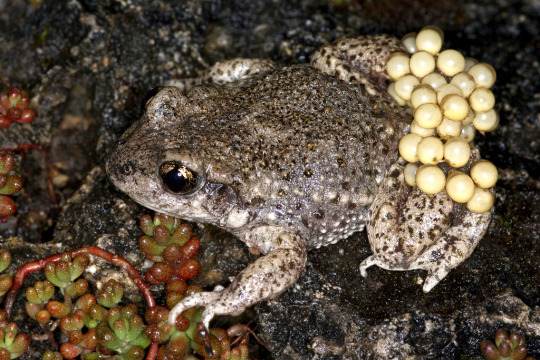
Call the Common Midwife Toad
The common midwife toad (Alytes obstetricans) is one member of the genus Alytes, which consists of five species total and is known collectively as midwife toads. These species can be found throughout most of Europe and northern Africa; the common midwife toad resides primarily in the Iberian Peninsula, in a wide range of habitats including temperate forests, grasslands, and agricultural areas. During the day they can often be found under logs, in crevices, or hiding in the burrows of other animals and at night they emerge to forage for food. In the winter
Like most anurans, A. obstetricans eats mainly small arthropods like beetles, spiders, and maggots. The tadpoles are solely herbivorous and feed on algae and plant debris. Predators of the common midwife toad include snakes and larger birds like herons. However, this species has a range of defenses against such predators. When threatened individuals inflate themselves with air and rears up on all fours to make themselves appear bigger. They also secrete a foul smelling toxin from the warts on their back; this toxin is potent enough to kill a venomous adder snake (Vipera berus) within hours. Given this risk, adults are rarely preyed upon, but tadpoles lack this toxin and are more often consumed by fish and aquatic insects.
Midwife toads, including the common midwife toad, get their name from their distinct mode of reproduction. The breeding season occurs from spring to summer. Large males emit a high pitched “beeping” call to attract females. When a female selects a suitable mate, he clamors onto her back and grasps her tightly. By squeezing her sides, the male induces the female to eject a mass of up to 150 eggs in a jelly-like mass. Then the male uses his toes to tease the mass apart into strings which he then threads around his hind legs. The female’s contribution is over, but the male will carry this cargo with him for 3-6 weeks, keeping them moist by periodically soaking in freshwater and protecting them from potential predators. Once the eggs hatch into a body of water, tadpoles take several months to reach their adult form. Young then take another 2-3 years to become sexually mature, and can live as long as 8 years.
Despite their name, common midwife toads are not true toads, though they share many similar characteristics. Their skin is thick and warty, and the body is short and stubby. They also lack webbing between their toes, as they are a largely terrestrial species. These toads are small, growing no longer than 6 cm long and weighing less than 10g. Females are generally larger than males. The color of the common midwife toad ranges from gray to cream to brown, with darker spots along the head and back.
Conservation status: The common midwife toad is considered Least Concern by the IUCN, due to their large population size. However, populations have been declining due to habitat fragmentation and loss, as well as epidemics of the highly deadly chytrid fungus.
Photos
Ronald Altig
Frank Vassen
Daniele Seglie (via iNaturalist)
Gernot Kunz (via iNaturalist)
#common midwife toad#anura#Alytidae#midwife toads#frogs#amphibians#deciduous forests#deciduous forest amphibians#grasslands#grassland amphibians#urban fauna#urban amphibians#europe#western europe#animal facts#biology#zoology
30 notes
·
View notes
Text
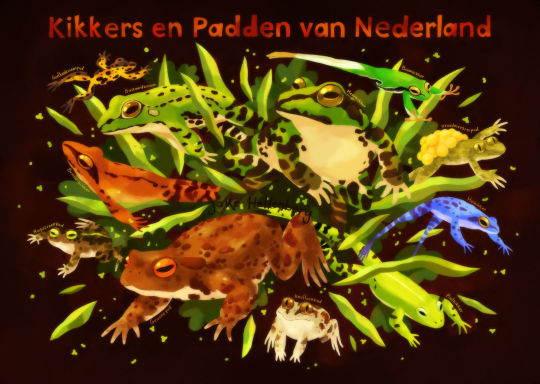
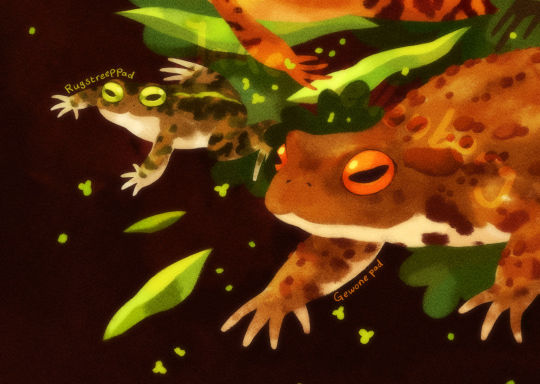
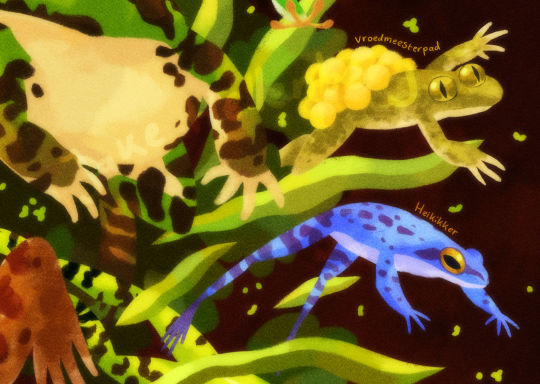
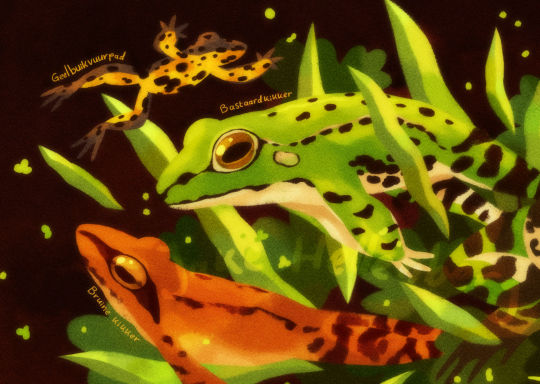
Kikkers en Padden van Nederland
Frogs and toads of the Netherlands, poster I made back in november!
Hope to open a shop soon so I can sell prints of these :) might also make a translated version in the future.
#artists on tumblr#drawing#illustration#digital#frogs#toads#species#yellowbellied toad#edible frog#marsh frog#tree frog#midwife toad#moor frog#pool frog#spadefoot#common toad#natterjack#common frog
46 notes
·
View notes
Photo
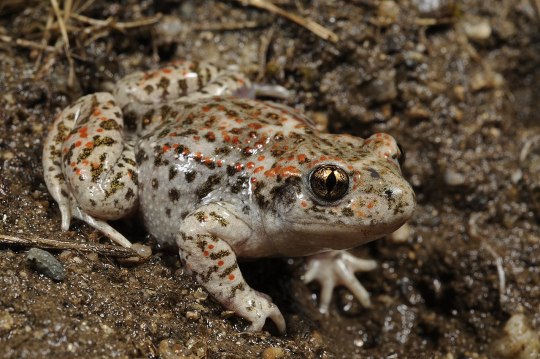

Midwife Toads (genus Alytes)
Midwife toads are a genus (Alytes) of frogs in the family Alytidae (formerly Discoglossidae), and are found in most of Europe and northwestern Africa.
Characteristic of these toad-like frogs is their parental care; the males carry a string of fertilised eggs on their backs, hence the name "midwife". The female expels a strand of eggs, which the male fertilizes externally. He then wraps them around his legs to protect them from predators in the water. When they are ready to hatch, the male wades into shallow water, where he allows the tadpoles to leap out of their eggs.
Five separate species of midwife toads are found across western Europe, northern Africa, and Majorca.
Midwife toads can be found in the snows of the Pyrenees, living at heights of 5,000–6,500 feet in areas such as the Néouvielle massif. Unlike the thin tongue of many amphibians, the midwife's tongue is round and flattened; its former family name, Discoglossidae, means "round tongue". In parts of France, midwife toads live in sand dunes by the sea...
Read more: https://en.wikipedia.org/wiki/Midwife_toad
photos: Iberian Midwife Toad by Benny Trapp CC and Common Midwife Toad by Christian Fischer CC
321 notes
·
View notes
Text
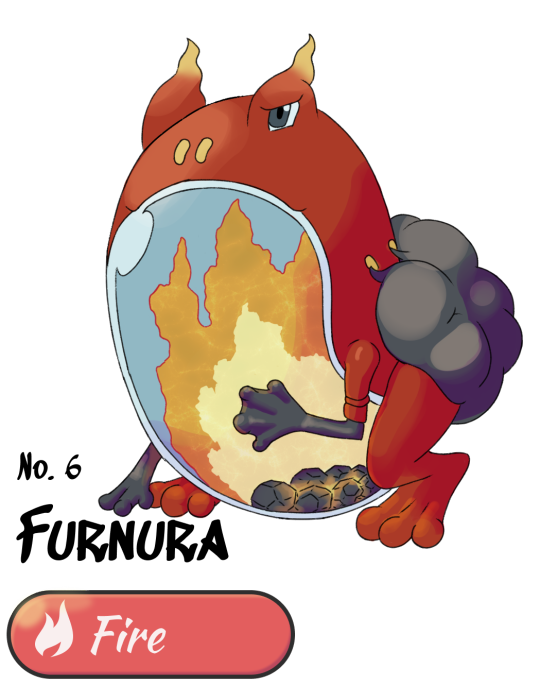
No. 6: Furnura, The Furnace Pokémon
Type: Fire
Evolves from: ???
"The inside of Furnura's glass stomach holds a heat that rivals Heatran. Whenever Furnura lays a batch of eggs, they stuff them securely in the thick smog that covers their backs."
Notes:
With Furnura, the final evolution of the fire starters of my region I'm kicking off this blog! Honestly, big achievement that I'm super happy with.
I think I did a great job at matching the pokémon artstyle and to create a design that would fit in the pokémon franchise.
For the design itself I decided to break free from the "Chinese Zodiac Fire Starter" theory since that was broken in Scarlet & Violet anyways. I opted for a frog & furnace design, mainly to see how I could combine fire and aquatic animals, like frogs, in a natural way. Additionally this creates a frog starter for every "primary" type, with Venusaur & Greninja.
This design is mainly inspired by coal furnaces and toads, specifically Yellow Bellied Toads (B. variegata) and the Common Midwife Toad (A. obstetricans) which, while uncommon, can be found in The Netherlands.
The name itself is a combination of Furnace & Anura, the taxonomic name for the group that contains frogs and toads.
3 notes
·
View notes
Note
Frog story time/anecdote! One of the types of frogs I'm fondest of is a little toad that lives in my mom's garden and that we hear every night during warmer seasons. We've dubbed it the "toot toad" because of the noise it makes (it's actually a "common midwife toad" according to Wikipedia). In recent years we've heard two distinct toots coming from different sides of the garden, so while we've never seen it (it hides in rock piles), we know it has a frog! (I highly encourage googling what its calls sounds like, it's adorable)
ohhhhhhh my god little squeaky guy!!! big fan of their little squeaky noise!!!!!
8 notes
·
View notes
Text
Mallorca

Mallorca is one of the Balearic Islands, located in the Mediterranean Sea off the eastern coast of Spain. It is the largest of the Balearic Islands and is known for its stunning beaches, crystal clear waters, and rugged mountain ranges. This comprehensive guide will provide you with all the information you need to know before visiting this paradise island.
The name Mallorca comes from the Latin term 'insula maior' which means 'larger island' and dates back to the Roman Empire.
Mallorca has a rich and diverse history, having been inhabited for thousands of years by various cultures including the Phoenicians, the Romans, and the Moors. It has also been influenced by the Spanish, the British, and the French over the years.
Mallorca's geological formation is fascinating, with the island being formed by rising out of the Mediterranean Sea around 5 million years ago due to tectonic activity. The island has a diverse range of rock formations including limestone, sandstone, and shale.
Mallorca is a diverse island with a mix of rugged mountain ranges, stunning beaches, and charming villages. It has a coastline stretching 550 km and has many picturesque bays and coves waiting to be explored. The Serra de Tramuntana mountain range dominates the north of the island and provides breathtaking views.
Mallorca's ecology is fascinating and unique, with over 50% of its plant species being endemic to the island. The island is home to a variety of animals including the Mallorcan midwife toad and the Balearic shearwater.
Mallorca's ecosystem is incredibly diverse and supports a wide range of flora and fauna. It has been declared a UNESCO World Heritage Site due to its unique biodiversity and natural beauty.
Mallorca has a Mediterranean climate with hot summers and mild winters. The island is blessed with around 300 days of sunshine per year, making it an ideal destination for beach lovers and sun-seekers.
Mallorca faces many environmental challenges, including overdevelopment, water scarcity, and waste management. However, the island is taking steps to address these issues, with initiatives such as recycling programs and the use of sustainable energy sources becoming more common.
Mallorca is an autonomous region of Spain and has its own government and parliament. The island is part of the European Union and uses the euro as its currency.
Tourism is the driving force behind Mallorca's economy, with millions of visitors flocking to its shores every year. Other important industries include agriculture, fishing, and manufacturing.
Mallorca has a well-developed infrastructure, with an extensive network of roads, buses, and trains connecting the island's cities and towns. It also has modern and reliable telecommunications and utility networks.
Mallorca has made significant contributions to science and technology over the years. The island has a strong presence in the renewable energy industry and is also home to a number of research institutes and universities.
Mallorca has been home to various well-known figures over the years, including the famous Spanish painter, Joan Miró, and the British writer and poet, Robert Graves.
Mallorca has a population of around 900,000 people, with a mix of ethnicities and nationalities. The majority of the population speaks Spanish and Catalan.
Mallorca has a diverse population, with people from many different ethnic backgrounds living on the island. The largest ethnic group is Spanish, with other groups including British, German, and Moroccan.
The majority of the population in Mallorca is Catholic, but there is also a significant Muslim population on the island.
The official languages of Mallorca are Spanish and Catalan. However, English and German are also widely spoken due to the high number of tourists from these countries.
Mallorca has a well-developed healthcare system, with public and private hospitals and clinics located throughout the island. There are also many wellness centers and spas offering a range of treatments.
Mallorca's culture is a mix of Spanish, Catalan, and Moorish influences, with a rich history of art, music, and architecture. Traditional festivals and celebrations are an important part of the island's cultural calendar.
Mallorca offers a wide range of activities for visitors to enjoy, including water sports, hiking, cycling, and golf. The island is also known for its vibrant nightlife and entertainment scene.
Mallorca has many beautiful cities, including the capital Palma de Mallorca, which boasts stunning architecture and a lively atmosphere. Other notable cities include Alcudia, Soller, and Felanitx.
- Palma de Mallorca
- Valldemossa
- Alcudia
- Soller
There are many magical places to explore in Mallorca, including the stunning Serra de Tramuntana mountains, the historic village of Deia, and the beautiful Cala Mesquida beach.
Mallorca has a rich culinary tradition, with dishes such as ensaimada pastries and sobrasada sausage being popular with locals and visitors alike. The island is also known for its delicious seafood and wine.
Mallorca has an international airport, Palma de Mallorca Airport, which is serviced by a range of airlines from destinations all over Europe and beyond.
Mallorca offers a wide range of accommodation options, from luxurious five-star hotels to rustic guesthouses and campsites. There is something to suit every budget and taste.
Mallorca is loved by people from all over the world, who are drawn to its stunning scenery, warm climate, and friendly people. The island has been immortalized in music, literature, and film, and continues to be a popular destination for travelers seeking adventure and relaxation.
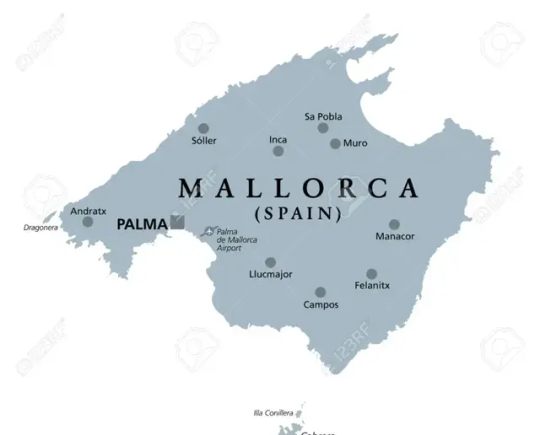
Etymology
Mallorca, also known as Majorca, is one of the most popular destinations in Spain. The name Mallorca comes from the Latin word 'insula maior,' meaning the larger island. This name was given in contrast to the neighboring island of Menorca, which is smaller in size. However, the island has been known by different names throughout history.
It is believed that the island's first inhabitants, the Talayots, named the island 'Baleària,' which means 'land of light.' Later, the Romans changed the name to 'Balearis Major,' which means 'larger island of the Balearics.' The Moors, who ruled the island in the 10th century, called it 'Majurqa,' which had a similar meaning.
During the Middle Ages, the island was known as 'Maiorca' in Catalan, 'Majorca' in English, and 'Mallorca' in Spanish. The name 'Mallorca' eventually became the most commonly used name for the island.
The island's name has also been linked to the legendary figure of Odysseus, who is said to have stopped at the island during his travels. The Greek name for the island was 'Melite,' which was supposedly named after a nymph who lived on the island.
Whatever the origin of its name may be, Mallorca has a rich history that spans over thousands of years. The island's name is just one part of its fascinating story.
History
Mallorca has a fascinating history that spans over 8,000 years. The island has been inhabited by various civilizations, each contributing to its unique culture and traditions.
The earliest known inhabitants of Mallorca were the Talayotic people, who lived on the island from the Bronze Age until the Roman conquest in the 2nd century BC. The Talayots built large stone structures, including settlements and tombs.
The island was later conquered by the Romans, who established the city of Palma as the capital and main port. The Romans also introduced Christianity to the island, which became the dominant religion over time.
In the Middle Ages, Mallorca was ruled by the Moors, who left a lasting influence on the island's culture and architecture. During their rule, the island became a centre for trade, and the city of Palma flourished as a cosmopolitan hub for commerce and the arts.
In the 13th century, King James I of Aragon conquered Mallorca from the Moors, and the island became part of the Kingdom of Aragon. The island's prosperity continued, and Palma became one of the most important ports in the Western Mediterranean.
In the 19th century, Mallorca, along with the rest of Spain, underwent political turmoil and instability. During this time, the island's economy suffered, and many people emigrated to other parts of Europe and the Americas.
Today, Mallorca is known for its rich cultural heritage, which is a blend of the island's diverse history and influences. Visitors can explore ancient ruins, gothic cathedrals, and museums that offer glimpses into Mallorca's past.
The island is also known for its traditional festivals, such as the Festa de Sant Joan, which takes place in June and celebrates the summer solstice with fireworks and bonfires. Another popular festival is the Fira de la Llampuga, which celebrates the arrival of the lampuga fish in the autumn.
Mallorca's history is a testament to the resilience and adaptability of its people, who have successfully navigated through periods of conquest, warfare, and economic upheaval to emerge as one of the most beautiful and culturally rich islands in the world.
Geology
The geological formation of the island of Mallorca is quite unique and complex. The island is predominantly made up of limestone and other sedimentary rocks, with a small portion of its western coast composed of igneous and metamorphic rocks. The limestone was formed over millions of years, as the remains of marine creatures settled on the ocean floor and were compressed by geological forces.
One of the most fascinating geological features of Mallorca is its extensive cave system. The island is home to over 4,000 caves, many of which are open to the public. The most well-known and visited cave is the Caves of Drach, located in the eastern part of the island. These caves are famous for their spectacular stalactites and stalagmites, as well as their underground lake.
Mallorca is also home to a number of natural springs, which are believed to have healing properties due to their high mineral content. These springs are a popular destination for tourists and locals alike, who come to bathe in the warm waters.
In addition to its natural features, the geological history of Mallorca has played an important role in shaping the island's culture and architecture. The traditional homes on the island, known as fincas, are often built using the local stone, and feature thick walls and small windows to protect against the intense heat of the Mediterranean sun.
the geological history of Mallorca is as rich and diverse as the island itself, with a fascinating story that continues to intrigue visitors from around the world.
Geography
Mallorca, one of the Balearic Islands located in the Mediterranean Sea, is famous for its stunning natural landscapes and diverse geography. The island has a total geographical area of 3,640.11 square kilometers, making it the largest of the Balearic Islands.
Mallorca's topography includes a rugged coastline dotted with stunning cliffs, coves, and beaches. The Tramuntana mountain range runs across the northwest of the island, offering breathtaking views of the island's landscapes. The highest mountain on the island is Puig Major, which stands at 1,445 meters tall.
The island has numerous bays and ports along its coastline, including the Bay of Pollenca and the Bay of Alcudia, which are some of the largest on the island. The island is also home to the Albufera de Mallorca Natural Park, which is a wetland area that covers over 1,640 hectares and offers some of the best birdwatching opportunities on the island.
Mallorca's geography also features a number of caves and underground lakes, including the Caves of Drach, which is one of the island's most popular tourist attractions. The caves are over 12 million years old and feature stunning underground lakes, stalagmites and stalactites, and impressive rock formations.
In terms of climate and weather, Mallorca has a typically Mediterranean climate, with hot dry summers and mild wet winters. The island experiences an average temperature of about 16 degrees Celsius in the winter and 29 degrees Celsius in the summer, making it a popular year-round destination for tourists.
Mallorca's diverse and stunning geography makes it an ideal destination for nature lovers, hikers, and adventure seekers who want to explore the island's natural beauty.
Ecology
Mallorca boasts an impressive diversity of flora and fauna due to its unique geological and climatic features. The island's vegetation comprises a mosaic of landscapes with varying degrees of development, ranging from pristine natural areas to heavily developed urban environments.
In terms of flora, the island is home to a wide variety of species, including endemic, native, and introduced plants. The most notable examples include the olive tree, pine, oak, and the evergreen Quercus ilex, known as the Holm Oak.
As for fauna, the island's crystalline waters are home to a rich variety of marine life, including dolphins, turtles, and swordfish. Meanwhile, the island's land fauna includes mammals such as wild boar, rabbits, and hedgehogs, as well as a diverse range of bird species such as the black vulture, the eagle owl, and the Balearic warbler, which is a protected endemic species.
The most famous animal on the island is undoubtedly the Mediterranean donkey, known locally as 'el burro'. These gentle creatures have long been associated with rural Mallorca and are a much-loved symbol of the island's traditional way of life.
Despite human encroachment, Mallorca remains a haven for several threatened and endangered species, including the Balearic Shearwater, Audouin's Gull, and the Cabrera Vole. Efforts are underway to protect these species and their habitats through environmental initiatives, including the establishment of protected areas and nature reserves.
Visitors to the island can also witness the impressive bird migration events that take place every year, as millions of birds pass through the Mediterranean region on their way to their wintering grounds in Africa.
Biodiversity
Mallorca's ecosystem is home to a rich variety of flora and fauna, making it a unique destination for nature lovers. The island's diverse habitats, including forests, wetlands, and coastal areas, support an impressive range of species.
In terms of flora, Mallorca boasts a large number of plant species, many of which are endemic to the island. These include the Mallorcan cypress, Balearic juniper, and the Mallorcan rockrose. The island is also home to areas of pine forest, often found on the mountainous regions such as the Tramuntana range.
The fauna of Mallorca is just as impressive, with a number of species exclusive to the island. Some of the most notable species include the Mallorcan midwife toad, the Balearic warbler, and the Blue Chaffinch, which is only found in the Tramuntana mountains.
Mallorca's marine ecosystem is also worth exploring, as the island is home to a range of sea creatures such as the Mediterranean starfish, the sea urchin, and the octopus. Visitors can also spot dolphins, whales, and sea turtles off the coast.
Efforts are being made to protect Mallorca's biodiversity, with a number of conservation projects in place. The Posidonia oceanica meadows, which play a vital role in the island's marine ecosystem, are protected by both national and international legislation. Mallorca has also established a network of natural parks and reserves, ensuring the preservation of the island's natural heritage for future generations.
Mallorca's unique biodiversity is a major draw for visitors seeking to explore and appreciate the natural world. Whether on land or at sea, the island's intriguing array of flora and fauna provides a fascinating glimpse into the complexity and diversity of nature.
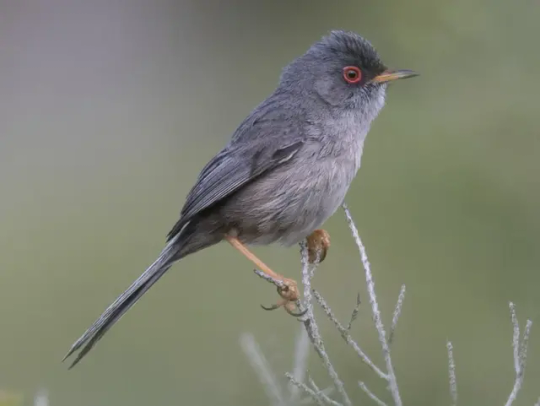
The Balearic warbler
Climate
Mallorca is blessed with a Mediterranean climate, which means long, hot summers and mild winters. The island gets around 300 days of sunshine every year, making it a popular destination for those seeking a warm climate. The months between June and August see the highest temperatures, with average temperatures around 28°C. The sea temperature during these months can reach highs of 26°C, making it perfect for swimming and water sports.
The winter months, December through February, are mild with occasional bouts of rainfall. The temperatures during these months rarely drop below 10°C. Unlike many other Mediterranean islands, Mallorca experiences a relatively mild autumn season with temperatures ranging between 17-22°C.
While summer is the busiest time for tourism, the shoulder seasons of spring and autumn provide excellent opportunities for outdoor activities like hiking and cycling. These seasons have cooler temperatures, making it comfortable to explore the island's beautiful countryside.
The island's location in the Mediterranean also affects its climate and weather patterns. The north and west coasts of the island are exposed to the Tramuntana wind, which brings cooler temperatures and occasional rainfall. The east coast, on the other hand, experiences a drier and warmer climate.
Temperature Chart for Mallorca
Month
Average High Temperature (°C)
Average Low Temperature (°C)
January
16
7
February
16
7
March
18
9
April
20
11
May
24
15
June
28
19
July
31
22
August
31
23
September
28
20
October
24
16
November
19
11
December
17
8
It is important to note that temperatures can vary widely across the island depending on altitude and location. The higher altitudes of the Tramuntana mountains can experience cooler temperatures, while the coastline generally experiences warmer temperatures.
Rainfall
The months between October and March experience the most rainfall on the island, with an average of 65.5mm in November. The summer months, on the other hand, are relatively dry with occasional thunderstorms. It is always advisable to check the weather forecast before planning any outdoor activities.
Mallorca's climate and weather patterns make it an ideal destination for those seeking a sunny and warm escape. With its mild winter months and perfect summer temperatures, the island offers something for everyone. Whether you want to relax on the beaches, hike in the mountains, or explore the charming towns and cities, Mallorca is a destination worth visiting.
Environmental Issues
Mallorca, like any other tourist destination, faces a plethora of environmental challenges. Due to its popularity, the island experiences a high amount of traffic, which leads to air pollution and increased carbon emissions.
Read the full article
0 notes
Photo

Here’s a dad we can all admire. This is the common midwife toad [Alytes obstetricans], a species native to parts of Europe, but recently introduced into the UK as well. Males wrap their strings of eggs around their legs, carrying them to damp places during the day and ensuring they’re safe from predators. Image by JP Vacher.
680 notes
·
View notes
Photo

Common Midwife Toad
Alytes obstetricans
Source: Here
95 notes
·
View notes
Text
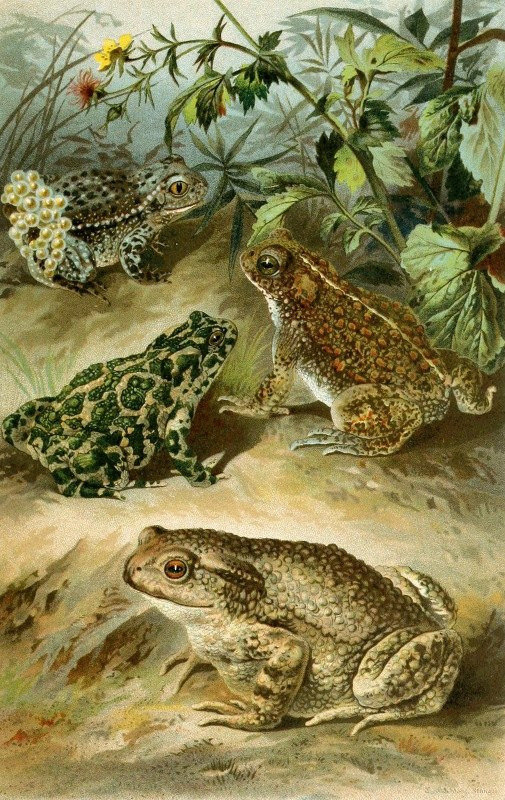
Bufo vulgaris, Bufo viridis, Bufo calamita, Alytes obstetricans (1897). Bruno Dürigen (German, 1853–1930)
#amphibians#toads#common toads#european green toads#natterjack toads#common midwife toads#Bruno Dürigen
327 notes
·
View notes
Note
Thanks to my adhd I just spent an entire night researching all the mating behaviour and parental care of different frog species but it’s ok because I love frogs. Did you know that midwife toads attach their eggs to their back legs and gastric brooding frogs swallow their eggs and keep them in their stomach until they hatch!! Truly the coolest animals.
who knew me and a frog had so much in common i ALSO swallow kids
30 notes
·
View notes
Photo

Common midwife toad heredity chart. Fortpflanzung, Vererbung, Rassenhygiene. 1911.
Internet Archive
214 notes
·
View notes
Text
Guide to the Zodiac: The Sylph of Space
The major element of creation is love, and the major action of love is Art.
-Laxmi Prasad Devkota
Names & Epithets
The Auxiliatrix; The Godmother; Mother Sun; The Lady Grim, Bloody Mary / Bloody Maryam (derogatory); The Center of Creation; She Who Unfurls; The Speaker at the Beginning of Days; The Midwife to All Living; The Queen of All Countries; The Jade Woman; The Rainbow Drinker, the Bromeliad.
Symbolism
The Symbol of the Sylph of Space, written instead of her name, is ♍, the sign of Virgo.
The Sigil of Space is a six-armed spiral.
The colors associated with the Sylph of Space are black and white, and her sacred color is jade green.
Other symbols associated with the Sylph of Space are fangs, frogs (which she may be carrying or seated on), locks, needles and thread, prisms, rosaries, scrolls, stars, and the sun
Appearance/Portrayal
The Sylph of Space is seen as a young or middle-aged woman, with jade eyes. Her skin may be gray, like the other gods, or luminous with the most brilliant white. One of her horns curves straight back, and the other folds forward to form a sharp hook.
Like the Witch of Life, the Sylph may be depicted as pregnant, but this is rare: for all that she has a world-creative role, she is rarely portrayed as the “genitive element,” in that sense. She may appear symbolically with six arms, or six limbs, especially where her worship is conflated with the Thief of Light.
She is always seen wearing the most fashionable clothing, whatever that may mean in any given place and time, and there is such cultural variation in depictions of her garb that images of the Sylph are reliable aids in dating ancient artwork. That said, she more often wears bright colors than dull.
Domain/Associations
The Sylph of Space is generally associated with transformation, light, art (especially fashion), and motherhood. She is one who enables creation, who forms the nurturing environment in which grows culture and civilization itself. She is a supportive goddess, kind when she can be and firm when she must.
Through her association with light and the sun, the Sylph of Space illuminates the dark, spreading warmth and forging connections between those who are isolated and alone, whether they are individuals, towns, or whole planets. Her role in this is sometimes entirely literal.
The Sylph of Space is a patron of midwives all over the universe, a calm and healing hand in the creation of new life. She is just as well-known as a patron of art and artists, enabling creation of a different sort.
The nature of the Sylph’s connection to transformation is more mysterious, but most scholars agree that she has both gone through great transformations and allows others to do so. She is thus associated with amphibians, most often frogs, which must go through transformation to become their true selves. Sometimes she is depicted as creating, protecting, or even being a frog-pond. This is usually understood less literally than some of her other roles.
Major Holiday(s)
Croakmas may be the most important day of the year. It is certainly the most commercialized. Whatever particular version of the creation myth you subscribe to, Croakmas is the celebration of that creation, the reputed anniversary of the universe’s birth in most cultures.
To celebrate the Sylph’s role in the act of creation, celebrants catch frogs and then release them. Oceans, or at least very large lakes, of ink have been spilled in fighting the debate over whether toads are an acceptable substitute. There are also, of course, various rules which must be observed (e.g. if the frog is one which looks after its young, like the African Bullfrog, then it cannot be caught while it is protecting them). In large cities, one can mark the season by noting all the small businesses that pop up in late summer selling caged frogs.
Following frog releases, some cultures give frog-themed gifts, while others throw feasts, throw parties, or just throw gobs of brightly-colored paint. This is an especially common celebratory practice in Sweden and regions of the United States with Swedish immigrants, and may have inspired the secular game of paintball.
There are technically twelve days of Croakmas, but the twelfth is the most important. You can often judge a person’s religious fervor by noting how many Croakmas days they observe, but sometimes people just like the festivities.
Croakmas is one of the most popular days of the year to get married. The other popular candidates are any holiday celebrating the Rogue of Heart.
Churches and Cults
Outside of the Zodiac Church, the most popular religious institution worldwide is undoubtedly the Birthlight United Congregation, which focuses on worship of the Sylph and the Knight. In their sacred texts, they identify the Sylph as the generative mother of the universe, not midwife as is canonical to the Zodiac Church. In these depictions, it is the Knight who ‘midwives’ the birth of the universe, and, together with the Sylph, generates the other nine gods from the universal placenta, turning the blood into light and passing it through a prism.
It is sometimes said that worship of the Sylph is the oldest worship of all, even though archaeological evidence to this effect is debatable. Nevertheless, “Neo-Sylphism” and “Reconstructed Mono-Sylphism,” to name a few variants, are a growing religio-philosophical system all around the world. At this point, it can sometimes be rather difficult to classify any particular manifestation, given how the Neos and Reconstructeds and so forth have all cross-pollinated each other so thoroughly.
Some cults connect the luminance of the Sylph with the domain of the Thief, and claim that they are sisters, or lovers, or even the same being entirely. This is considered heresy by the Zodiac Church.
In the early part of the Twentieth Century, painter and mountaineer Edward Crowley published a series of (what he claimed were) dialogues between himself and the Sylph of Space. To prove their authenticity, he offered up a letter which had been allegedly written by the Sylph; a few people who are known to have been familiar with the Sylph were able to view the letter and vouched for it, but the letter was later lost in a fire and modern handwriting experts and theologians are divided on whether it was merely a good forgery. L. Ron Hubbard, who is more famous for his naval career, was also a high priest in the Order of the Jade Dawn, one of many offshoot religions that Crowley’s writings inspired.
Prayer and Worship
People pray to the Sylph for safe childbirth, and for healthy children, but not for fertility. She does not generate; she facilitates. The Sylph is also prayed to for inspiration, for healing of the body and mind, and for internal change.
Prayer to the Sylph almost always takes place under well-lit conditions, sunlight if possible. It is common for churches focusing on the Sylph to maintain community gardens along their southern wall, where the sun is brightest, a place both for prayer and meditative cultivation. Others set up frog ponds, for similar purposes. It is a common aspect of folklore that if one sees a frog while praying, then the Sylph is paying particular attention to you.
Lore
It is occasionally said that, if the gods created the universe, it is the Sylph who created the universe most of all. Sometimes she gives birth to it, but more often she midwives its birth, pulling it wailing and damp, and warm and new from wherever it came from. This ‘wherever’ varies by tradition. The Zodiac Church claims the universe’s providence is an egg, other groups claim that it was pulled from a deep pool of water, or from an earthen jug, or from a damp cave, or from the stomach of a huge dead beast.
The Sylph is usually understood as a moderating force in the pantheon, keeping peace between factions. She is a force of reconciliation, and is slow to anger. Just as well known, however, is the ferocity of her wrath, on the occasions that her anger is elicited. Enemies of the Sylph rarely get the chance to cross her a second time.
The nature of the Sylph’s transformative aspects are, as previously stated, somewhat controversial. It is well-known that she can change color and can emit light from every inch of her body, but why only she amongst the gods is capable of this is unknown. Some claim that this is a sign of ‘rebirth,’ a self-cleansing metamorphosis that is somehow more pure than that undergone by other gods. One heretical claim is that she herself once had the form of a frog, or toad, or other unsightly creature, and transformed into her current shape through the power inherent in creating the universe.
Public Relations
The Sylph is one of the most outgoing of the gods (some even say, the only god to enjoy their own divinity). She is a patron of the arts, and makes frequent public appearances.
The Sylph’s involvement in art, however, is more than simply donations of wealth or influence. She maintains two well-known, highly-selective ‘artist colonies,’ one in China and one in New Zealand, and though they are mostly run by her disciples, artists who have lived there claim to see her in person relatively frequently.
The Sylph is entirely responsible for faster-than-light travel: wherever the Sylph goes, space is bent slightly, and if she traverses the same route many, many times then space there will be warped severely enough that an ordinary traveler would find their progress greatly hastened. When it is time for a “mature” civilization to join the intergalactic community as a full member, as Earth hopes to do in the next couple of centuries, the Sylph goes back and forth, faster than the eye can track, until a new route is added to the network.
It is an unfortunate fact that these routes must be maintained, and the Sylph does not spend all her time knitting galactic civilization together, so the Sylph doesn’t draw a direct path between every set of two worlds. It is enough for each world to have a direct path to several other worlds, and indirect paths to all the others.
Some scientists believe that there are other methods of faster-than-light travel, but the gods are united in their position that Earth will undertake no research in such a direction until it is mature, and the reason is clear enough: even a very basic understanding of how secular FTL could work is sufficient to show that FTL travel means FTL weapons . With that understanding, it is forbidden by the gods that any being from Earth travel permanently off-planet. Some fortunate chosen of the Sylph of Space have seen the worlds of distant galaxies, but none are permitted to stay there.
3 notes
·
View notes
Text
Jurassic Park - Expanded With Modern Knowledge
I’ve posted a few times now on how to redo Jurassic Park/Jurassic World in terms of Fauna Diversity and other factors. So you can say with this post I’m “Back on my Bullshit.”
Let’s dive right in, shall we? We’ll see some repeats, but others not so much. We’ll go about it via different exhibits: The Primary Tour, The Aviary, the Aquarium, The “Fossil Zoo”, The Feeder Animals, and the WIlds.
The Wilds
There are indeed wild animals in Jurassic Park. In the book, part of the whole thing as the re-creation of an extinct ecosystem. The island Isla Nublar is based on, Cocos Island, is extremely isolated and secluded. Outside of feral animals ( pigs, deer, goats, cats, and rats), there is very little land life. Arthropods (Primarily ants, butterflies, millipedes, centipedes, spiders, and isopods) and 2 species of lizards - an Anole and a Gecko. That’s about it. Other sources say there are other reptiles on the island, but I have yet to find any details beyond that.
Though there are a LOT of birds. 90 species, mostly seabirds using it or the offshore rocks as breeding sites. Endemic birds include a Cuckoo (The Cocos Cuckoo, which is a glorious name a had to share), a finch, and a flycatcher. Most other birds are found elsewhere inland or offshore.
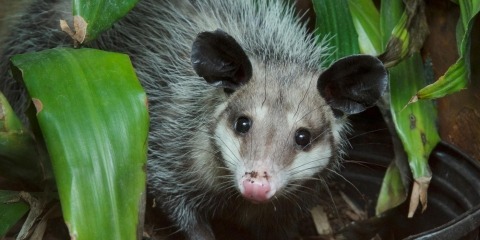
The books add 4 animals to the wilds: frogs, leeches, large tarantulas, and opossum. It acknowledges feral rats, but little else. I’d include them, easily. Several varieties of Opossum, because they are an archetypical “Ancient” mammal. The Common and Virginia Opossum, the Water Opossum, and 2 types of Mouse Opossum are all native to Costa Rica and could easily island-hop to Nublar beforehand, or be introduced for a “Night Safari” element.
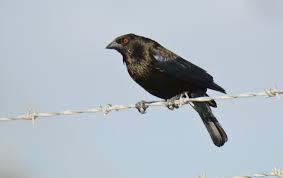

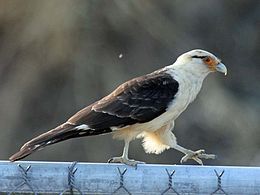
Me? There are 3 birds I’d bring focus to. The Bronzed Cowbird, the Cattle Tyrant, and Yellow-Headed Caracara. All of them follow large animals (or at least, things Capybara sized or bigger) and eat insects disturbed by the larger animals, or that try to feed on the larger animals. All are native to Costa Rica and its surroundings, so with the influx of large herbivores, they are bound to come over. Further, smaller herons and egrets would also take advantage of the larger animal movement disturbing prey.
South America also has its own dung beetles, and I bet a few of them could be called over to all the free food. Most deal with monkey poo, but I doubt they’d ignore the bounties available. InGen may bring in their own to handle the elephant-sized spore, but there will be dung beetles. Lots of them.
Other Costa Rican fauna I’d include as background elements (that could feasibly be on Isla Nublar AND fit the prehistoric aesthetic) include shrews, Central American Agouti, Northern Tamandua, Nine-Banded Armadillo, Brown-Throated Three-Toed Sloth, Hoffmann’s Two-Toed Sloth, and Central American Dwarf Squirrel.
But we also know that InGen released animals into the park that were ‘prehistoric’ to make the whole area support the dinosaurs in some way. This included a (grossly misplaced and oversized) dragonfly/griffinfly.
So, in a more realistic version, what would they do release into the wilds of Isla Nublar?

Tinamous. As I’ve said before, they can easily be in enclosures with larger animals. They’ve been in their current form for about 10 million years, and they resemble ancestral ground birds (the kind that survived the KT Boundary) extremely well.
Capybara. Docile as hell and gets along with everything, as well as attracting the tick-eating birds mentioned above, these animals can chill with the best of them. Plus the genus dates back 3.6 million years, with the subfamily going back about twice that far. They are a bit longer than the largest known Mesozoic mammal (Repenomammus (90cm, 13kg)), growing to 1.3m and 68kg.
The Feeder/Support Animals
In the novel, there are made mention of fish being stocked that the Tyrannosaurs feed on. The Arapaima is about the only fish for that environment (and easily obtainable) that could fit the bill. They also use goats as feeder animals, and in the movie, they use cattle to feed the raptors.
In my take, the carnivorous animals would primarily be fed with fish and poultry. Some smaller ones may warrant mice or rats, but fish would work much better overall. So, Chicken, Turkey, Arapaima, Fathead Minnows, Tilapia, Poecilia, and so on. Given what we currently know about Tyrannosaurs, 6 Turkey a day would be enough to keep it fed (T. rex may need about 40k calories a day to function, and one turkey can provide about 7k calories). Or 5 Arapaima (fish provide 82 calories per 100 grams, and arapaima can get up to 200kg, even assuming 100kg, that’s 8,200 calories per fish).
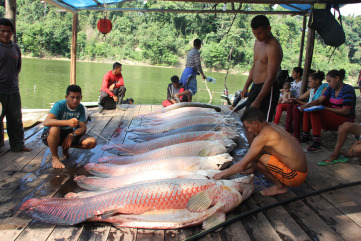
Goats have about 1 calorie per gram, so a goat weighing 40kg (not out of the ordinary as breeds range from 20 to 140kg, but it would be an overall large goat) would meet the dietary needs of a Tyrannosaur.
I’ve already mentioned the cowbirds, but they are pretty important for overall animal health. Because I’m sure there are ticks since the deer got on the island.
The Fossil Zoo
Here are “Living Fossils” and things reverse-engineered from existing animals to be more akin to their prehistoric brethren. As well as their mammalian De-Extinctions. Because some would be rather easy.
Some of the ‘wid’ animals would have an example or two in this more “proper’ zoo environment: Capybara, Agouti, Nine-Banded Armadillo, Tamandua, Sloth, Opossums.
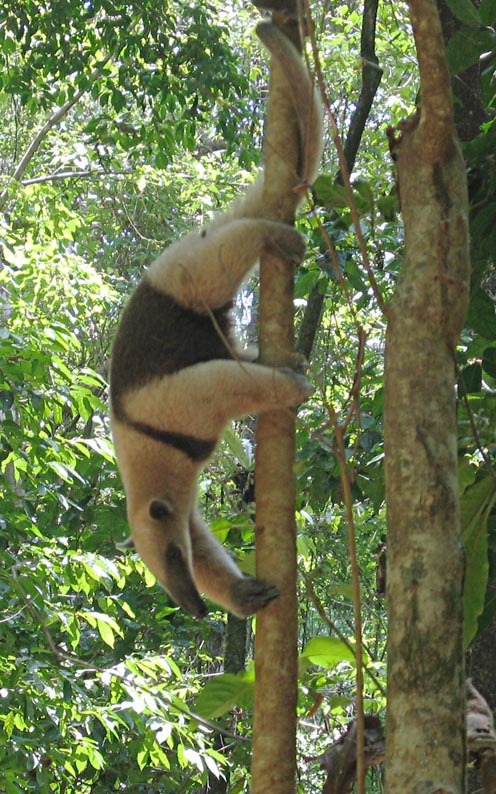
Other mammals of note in this section would be Treeshrews, an Aardvark, Greater Mouse Deer, Black and Rufous Elephant Shrews, A Tapir, Chacoan Peccary, Solenodon, A Giant Anteater, Platypus, Short-Beaked Echidna, and Long Beaked Echidna.

The Platypus and Long Beaked Echidna may be modified to be larger (2ft long, and 4ft long) to match fossil ancestors.
It would also be home to 3 de-extinct Mammals. Quagga, Thylacine, and Gigantopithecus. The first is easy, the second could get additional funding, the third... Because it’s Cool.
But with any de-extinction, there come problems. This is Jurassic Park after all.

Quagga is easy to tame but can be high strung at times. It does not react well to the smell of predatory dinosaurs.
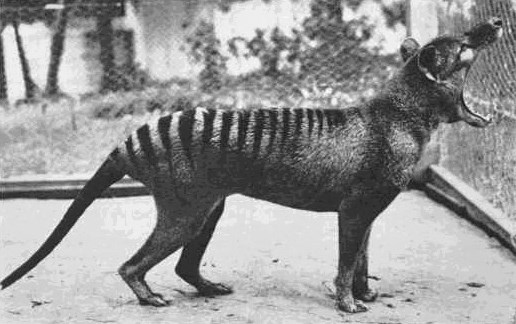
Thylacines ... have a very nasty hunting technique of BITING OFF FACES. They aren’t bloodthirsty or anything, even taking turns to feed in an orderly fashion, but their hunting technique is rather mean.

Gigantopithecus are 3m tall, 500kgs, and STILL able to climb rather well. it looks like an Orangutang trying to play Gorilla, but with only minimum sexual dimorphism in terms of size (males are still bigger) and it’s working out very well. Like orangutans, they are natural cage breakers. They also have very strong jaws and large canines. They will bite when angered, and if it wants to, it is strong enough to wreck several people in a charge.

Capybara, Mouse Deer, Tapir, Peccary, Giant Anteater, and the de-extinct trio would have outdoor enclosures, naturally.
Most of the reptiles would be in the aquatic section, but there are 4 that would be here.
Tuatara (Modified for tropical environments), the Aldabra Giant Tortoise (possibly grown to “Testudo atlas”/Megalochelys atlas sizes -- almost 7ft across and weighting 4000kg), Quinkana, and Megalania.

Why? Because Quinkana is a cool crocodilian land predator, and Komodo Dragons are basically island dwarf versions of Megalania. Quinkana is 6m long (so it’s Q. fortirostrum rather than any of the other species), and Megalania 7m long.
Once again, we have the unexpected from the de-extinct animals.
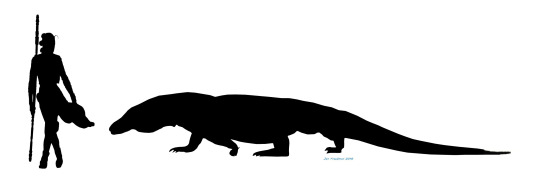
Megalania has two things that were discovered recently in its descendants. First, it is venomous. The venom lowers blood pressure in the victim. So, combined with its horrible bite, the victim will more readily bleed out. The other factor is they retain the Komodo Dragon’s ability to have virgin births. So, despite being female, they can generate MALE offspring asexually.
I think, narratively, it would be more fun for this to be the source of the breeding dinosaurs in Jurassic Park.
Despite being a crocodile, Quinkana is very active and mobile. It’s also a decent digger. So it makes a mess of the initial enclosure.

There are a few birds in the fossil house, both the subject of De-extinction efforts. The Dodo and Upland Moa. Both have some accessible DNA, and modifying birds' eggs is not too far fetched given what they've already done.
The last section of the Fossil House can be called the “Carboniferous Swamp” as it’s a re-creation (as best they can do) of that environment. Here are many amphibians, some with a proper prehistoric pedigree: Greater Siren, Midwife Toad, New Zealand Primitive Frog, Aquatic Caecilians, and Giant Chinese Salamanders. The latter of which naturally can be up to 6ft long. JP scientists ensure that they get big with modifications, and have gotten a few 2m monsters loafing around the “Fossil Zoo.” Basically, as many “Living Fossils” as they can cram together.
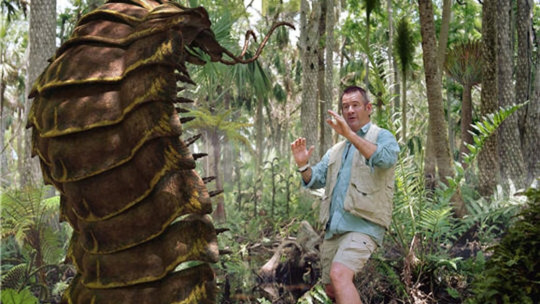
But the real prize here is the insects. There are a few ‘standard’ ancient insects, and some velvet worms on display. But the prize is the 4 ‘recreated’ insects. InGen’s versions of Pulmonoscorpius, Meganeura, Arthropleura, and Manoblatta. A 70cm scorpion, a Griffon-fly with a 65cm wingspread that was also 70cm long, a millipede 1m long, a 40cm cockroach, and a 1m Centipede.
Yes, a 1m Centipede. Narratively, we WANT things to go south, and well, there’s an episode of Lost Tapes which really has fun with giant Centipedes.

And once again, the Chaos Effect rears its head. Of course, they are breeding despite their best efforts. But it’s more than that.
The Pulmonoscorpius they have is derived from an emperor scorpion. This means it can burrow better than they expected, and while the venom of the base animal is not dangerous, the dosage in their Pulmonoscorpius makes it so. Paralyzing adults. In the weak or young, it can lead to coma and death. Also, it’s more aggressive than the base species.
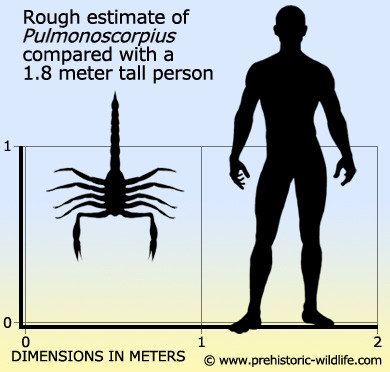
The Griffonfly is the most active among them and can use its wingbeats to breathe more effectively. It spends most of its time growing as a nymph, and a short portion of its life as a flying adult. To hold it, you need a falconer’s glove.

The Millipede Arthropleura is armored as heck. Far more than they expected. And it gnaws like a rodent.
The Centipede Arthropleura is a monster. It’s fearless and willing to attack people, with venom enough to greatly harm a person (killing the small and weak). Multiple bites can be fatal. They also act as carrion eaters.
And the roach? It’s an omnivorous scavenger. If hungry enough, they will gnaw on people who are sleeping near them.
The Aquarium (and Other Water-Ways)
There’s a lot of aquatic “Prehistoric” animals to draw on without genetic engineering. Considered “Fluff” by the park, they nevertheless flesh things out.
There are native fish in the waterways, mostly killifish. Ingen brings in (and modifies) Bichir, Paddlefish, Sturgeon, Lungfish (South American and Queensland), Gar (Tropical and Alligator Gar), Coelocanth, Bowfin, Arapaima, and Silver Arowana. Several of these are prized gamefish, so of course, Jurassic Park has a pond to fish for them.

The aquarium also includes Amphibians: Greater Siren, Midwife Toads, New Zealong Primitive Frogs, Purple Frog, Hula Painted Frog, and another Giant Salamander.
Aquatic reptiles are where things get more interesting. There’s are tanks for sea turtles (Olive Ridley’s Sea Turtle), Pig Nosed Turtles, an Alligator Snapping Turtle, and (of course) American Alligators.
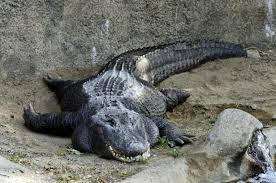
Now we get to the cloned animals. First, the aquatic crocodile Metriorhynchus. Also, Titanoboa (They call it Gigantophis, but it’s Titanboa). Nothosaurus, Ichthyosaurus, Plesiosaurus, and Mosasaurus round out the menagerie.
So, how do they go wrong?
Well, half of these animals give live birth, so the standard cloning technique didn’t work until they made an artificial womb. Titanoboa is misidentified and almost fully aquatic.
Metriorhynchus will ‘nibble’ larger prey. Bite off chunks of something swimming by, darting in and out. They may or may not kill people this way, but it will maim and ‘disarm’ them.

Nothosaurus have very dextrous hands, making the seal-reptiles natural cage breakers. They are also great climbers, so they speculate that the animals lived in rocky environments.
Ichthyosaurs look like dolphins, but they are not. More skittish than dangerous.
They thought Plesiosaurus was able to haul itself onto land, but it is not.

Mosasaurus... It is a mosasaur. A second roar of jaws to manipulate prey it captures is pretty badass enough. And it can swallow a person whole with little effort.
Among the dinosaurs, we have the Great Auk, the Original Penguin. Another recently extinct bird. Another bird in the Aquarium is the Common Loon, but by comparison, it is a minor addition.

The Great Auk is an exceedingly brave bird. It will not run readily, preferring to peck and bite when confronted. Why it’s so brave is not evident, but it is, and won’t take ‘no’ lying down.
The jewel of the dinosaurs in the aquarium is the Halszkaraptor-- the diving duck raptor. Because, really, how could I not? This one is weird enough on its own.
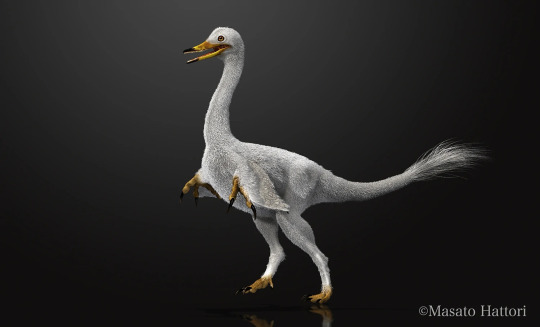
The Aviary
When I first put this together, I made an effort to keep the Pterosaurs small. I’m going to make some exceptions to that for Jurassic Park fun.
Modern Birds brought into parts of the aviary (because it has parts) are Tinamous, Seriema, California Condor, Magpie Goose, Mousebirds, Bearded Reedling, Broad-Billed Spaayoa, and Hoatzin.

Cloned birds include the Carolina Parakeet and Passenger Pigeon. These two have large open enclosures because they require a LOT of animals in their group to be comfortable. So already, there are over a hundred of each of these animals.
Avian Dinosaurs in the park include Archaeopteryx, Microraptor (which they call Tetraptertyx),, and Ambopteryx.
Archeopteryx is a glider capable of downward flaps, but no upstrokes. A generalist with the coloration and overall habits of a solitary crow.
Microraptor is a better flying and climber than Archeopteryx with its four wings and wider grip, it doesn’t seem to mind people and will use them as perches -- which can be dangerous when their claws go in the wrong place.

Ambopteryx is the largest winged Scansauropteryx. An omnivore, this bat-winged beasty is just over a foot long and vomits caustic, foul-smelling stomach contents onto attackers when it is angry. So, really, it’s a “Dragon.”
Ceredactylus was the main Pterosaur in the Aviary in the book, and I’ll keep them around too. Complete with territorial nature.
Other Pterosaurs in the Aviary include Pteranodon, Quetzalcoatlus, Sordes, Anurognathus, and Dimorphodon.
Unlike the films, this remembers that Pterosaurs use their heads for grasping prey and have no eagle talons.
Pteranodon is more gregarious, an albatross scaled up.

Quetzalcoatlus is just... well, your basic Giant Azdarhkid pterosaur. It will totally spear a person and eat them. But it spends a lot of the time on the ground, so it keeps the enclosure size small ... for a Giraffe sized animal. And yes, it will eat people if it can.
Sordes is an eater of insects and amphibians. When disturbed, they will swarm around an attacker, pecking and biting to drive them off. This can lead to some unfortunate accidents.
Anurognathus is basically a pterosaur owl and insect eater. They have the same unnerving effect as owls. Their defensive cries and glowing red eyes are terror inducing among humans, easily generating panic.
Dimorphodon gallops along the ground most of the time, flying only for short distances. Insects and small animals make up the bulk of their diet. If it’s small and fast-moving, they will try and take a bite. That includes fingers. Or whole hands.
The Park
Now we come to the dinosaurs. There are 3 main groups of them in the park: Minifauna, Fauna, and Megafauna. The Difference comes down to weight. Megafauna is reserved for animals over a ton. Fauna is for animals above 20kg (or 50lbs). Minifauna is for animals below 20kg on average.
The park comes with 21 examples of Megafauna, 10 examples of Fauna, and 10 examples of Minifauna.
In the Megafauna, many of them are prone to being ... chaotic.
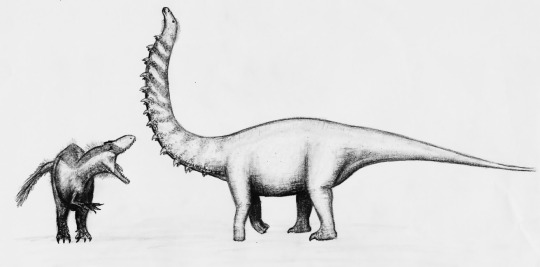
Apatosaurs are the second biggest animal in the park by weight (15 tonnes). Their necks are lined with spines they use for defense and in contests with each other. They also have a line of raised spines along their backs, which become quite wicked at the tip of their tail. Lashes with their tail, done to other herd members in dominance points, or against what annoys them, can be very dangerous. But not as dangerous as when they rear up and try to smash things with their feet or neck. It’s also a low feeder/grazer, vacuuming up food as it moves its head side to side.
Camarasaurus (C. lentus) are the heaviest animals in the park (20 tonnes), and are mid-range browsers. They are docile, but their large nasal cavity proves very enticing to Avian Flu, which it acts as a carrier for, but doesn’t really suffer from.
Spinosaurus is a big land pelican/Waddling Penguin/Crocodile thing. Big claws and jaws are nasty enough on their own with its semi-aquatic nature making it versatile, it still is goofier than it has any right to be. Which masks its danger.
Saltosaurus is a sauropod hippo with armored scutes along its back. That’s pretty darn weird enough. It’s as heavy as an elephant, and a browser as well, but not to the height of some other animals...
Tyrannosaurus hunts in packs like wolves, so they had to make a group of them as “Sisters” to prevent self-destructive behavior. So there are 4 “Sisters” that the park knows of. With all we know about T. rex, there’s not much more to ‘enhance’ it other than letting it be as smart as a modern alligator, or house cat. Yes, they are comparable. Eagle-Eyed, nose better than a bloodhound, and with powerful jaws, it is an apex predator for a reason.
Triceratops has small quills along its torso and back like a porcupine to defend itself in addition to armor plaiting. They prefer to travel in small groups and fights for dominance can occur if the group gets larger than 5 or 10 individuals.
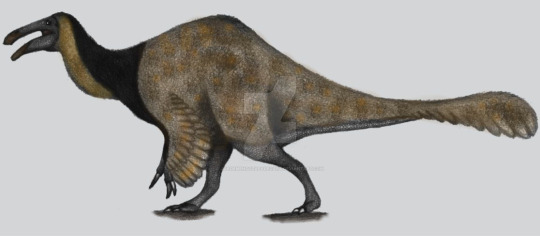
Deinocheirus is r one of those dinosaurs “This is too weird for the 80s to handle” we now know of. When riled, its arms are very dangerous weapons. And it will bite, even if only to toss away smaller attackers. Eating fish and plants, this animal has an impressive bluff display, and confidence to back it up.
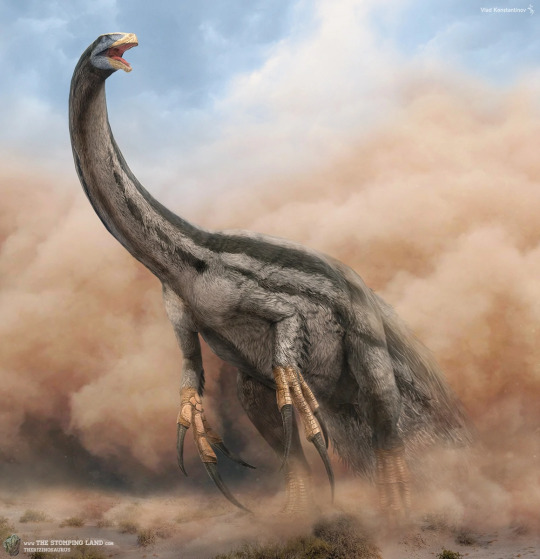
Theirizinosaurus is very weird, and worse, has the personality of a goose or swan. Very confident, will rush down what it thinks are threats, and those claws make it very dangerous.
Omeisaurus uses its clubbed tail to establish a pecking order (or “smashing order”) in the herd.
Euhelopus is one of the few true browsing sauropods, really resembling a Giraffe in posture or a small Brachiosaurus/Giraffatita. Like a Giraffe, it can kick with a LOT of force. Enough to decapitate a man from brute force alone. It’s the smallest of the long-neck Brachiosaurus, which is why it was targeted for cloning.
Ankylosaurus is a goat. It eats damn near anything. Primarily eating leaves, it also adores fruit, and will go after large insects when it can. Or swarms of them it just licks up after breaking open a nest. They are proficient diggers as well, they like to sleep in burrows they build. It’s also very well camouflaged, so you can trip over it and it will likely take a swipe at you for your mistake.

Edmontosaurus may be considered a ‘simple’ dinosaur from the bones, but that doesn’t tell the whole story, not by a longshot. See that picture? That’s an Edmontosaur!
Stegosaurus is an extremely stupid ninja. It moves quietly for its size, can wiggle and turn its plates red when angry as a distraction, and fold its whole body into a U shape to better strike enemies with its thagomizer. And it is not afraid of groin shots.
Styracosaurus is all about intimidation. When confronted, it will mock charge, holler, stamp, and make a fuss. But if you stand up to it, it will back off, or even run away.
Amargasaurus uses its neck spines defensively while grazing. When threatened, they roll their heads under their chests, sticking out their spikes, and charge. They do this with minimal provocation. They also lash their tails around wickedly.
Parasaurolophus is LOUD. Constant maintenance is needed on the paddock as they can rattle apart their paddock locks if they are not checked regularly. It also gets the attention of certain predators regularly. Insulation has so far proved ineffective.

Gigantoraptor is pretty damn weird all on its own. An omnivorous oviraptorosaur over 12ft tall at the hip, feathered and fearsome. It uses its feathery arms (as well as a displaying throat pouch to communicate with members of its species.
Allosaurus, the lion of the Jurassic. They behave similarly to crocodiles, but more actively. Which means they hunt semi-cooperatively. Because of their primarily slashing jaw setup and strong necks, they prefer to bleed large items to death rather than quickly kill them. They can still swallow a man whole (as long as they aren’t too big).
Plateosaurus is a large, primitive planteater. It walks on its hind legs, despite its size and descendants. When threatened, it rears up and tries to claw attackers who get to close like an irate Ant Eater. And those claws are very mean. They rake trees with their claws as a demonstration of power in the herd.
Borealpelta digs ruts for themselves to sleep in at night. This means only their armor bits show up. They usually use the same one when they can, but it still damages enclosures.

Carnotaurus is a Cheetahs. Extremely long-legged runners at high speed, and at long distance. They can also swallow a man whole by stretching their jaws out. Also, its tiny arms are used for flappy dance displays.
Now we come to the Fauna, which are small enough to get inside buildings and still be a visible threat to humans on occasion.
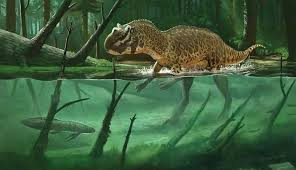
Ceratosaurus is basically a bipedal crocodile, scutes and all. The nasal horn is flat and largely for display. They prefer swampy environments and eating aquatic animals. The thick hides of these animals make darting almost impossible, and mildly resistant to small arms fire.
Pachycephalosaurus have dynamic skulls, the younger ones being spikier than the adults. And they will butt EVERYTHING that annoys them even slightly. Worse still, they are omnivores. They decrease the amount of meat in their diet as they age, but they won’t turn it down.
Dilophosaurus has the frill and venom of the novel/movies, but the frill is made of feathers rather than skin and is lost in adults, which can be up to 3m/10ft tall.

“Velociraptor”, or really, Dakotaraptor, is as smart as a crow, which means minor tool use. Juveniles can fly short distances to escape an attack. They are less like wolves and more like lions in how they hunt, climbing in trees to assist in their ambushes. Think of them as ground-eagle-panthers with crow intelligence.
Protoceratops make burrows to live in. They sleep for short periods throughout the day and night, at seemingly random intervals.
Struthiomimus’ fully developed wings are colorful, large, and help it maneuver at speeds up to 50mph (80kph). They also help it intimidate others -- their claws also packing a bit of a punch. Primarily herbivorous, they are also very vocal animals. Almost obnoxiously so.
Dryosaurus is the dinosaur equivalent of a deer or large gazelle, living in small groups in forested areas. Because of this, and an extremely skittish nature, they are hard to spot in their enclosures. Sure, they are ON the tour, but the runaway when the cars come by. It makes care for them difficult as well.
“Troodon” is really Stenonychosaurus. Omnivorous, the focus on rodents and other small animals. They also feed on more fruit, seeds, nuts, and other high energy plants more regularly than InGen thought. They are the best cage breakers in the park, being the smartest animals there (yes, smarter than the raptors). They are also guide-animals. They will guide larger predators, like tyrannosaurs to food sources they can’t access, but that the other animal can. Similar to Crows and Wolves.

“Oviraptor”, really Anzu, is a large oviraptorid. Herbivorous with occasional meanderings into carnivory, it’s main gimmick is its voice. It’s a Lyrebird. It can vocally mimic anything its herd before and incorporate it into display songs. It can also use this to manipulate other dinosaurs, be it attract small animals to eat, bring ‘help’ for itself, or scare away potential threats. So, imagine a scene. A group of humans is hunting for other survivors, they hear someone crying “Help! Help!” and occasionally screaming. They rush to aid and find this tall animal here. Their guard lowered in confusion as another predator sneaks up behind them and takes them down.
“Parkosaurus” is actually Oryctodromeus. A burrower like Protoceratops, they are more communal in their nesting. It’s rather unsettling to see animals as big as a medium-sized dog pop-up out of the ground like prairie dogs.
Microfaunae are Coyote or smaller animals that can still be dangerous, but not so often or as directly.
Coelophysis is the “Emu” of the park. They are inquisitive, but also not very bright. They are also opportunistic. Which can be hilarious, but also dangerous, because you are made of meat. And they see no qualms with biting someone and running away again and again. In groups.
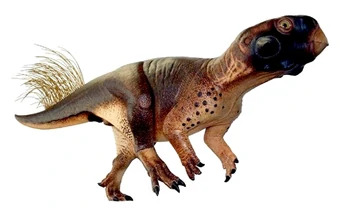
Psittacosaurus rattles its tail feathers as a means of simple communication. They also bite with a lot of force when agitated, enough to take off a hand.
Dromaeosaurus is a small raptor (or rather, typical, medium-sized one), but one more heavily built to take down prey larger than itself. This one will hook onto a person and bite away, ripping out chunks. Given they are about the size of a turkey, several of them can do that to a person.
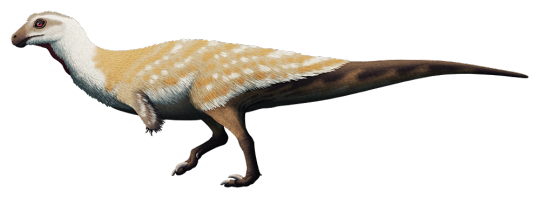
Vespersaurus is an opportunistic omnivorous desert dweller that runs along sand primarily, using its single grounded toe to get better traction and movement. Its kick has TWO large raptor-like claws on it, making it extra nasty.

Limusaurus is another Noasaurid, a strange group of dinosaurs related to Ceratosaurus. This one changes its diet as it ages. As hatchlings and juveniles are omnivorous, eating plants, insects, and small animals. As they become adults, they switch to an entirely herbivorous lifestyle. This confused the hell out of InGen first time through.
Nanosaurus (a.k.a. Othnelia/Othneliasaurus) is a tiny ornithopod that fills in the same role as a Thompson’s Gazelle. Small, grazing, and skittish. They like being in large herds for protection.
Panphagia is an omnivorous ancient sauropod relative and the oldest species of dinosaur in Jurassic Park. A consummate opportunist, its hands make it a pretty decent cage breaker. And it really will eat anything, almost as much as the Ankylosaurs or goats, but more carnivorous.
Procompsognathus is a chicken-sized carnivore that eats small animals as well as scavenges for food. It is also venomous, operating in groups to take down injured animals larger than itself.

Compsognathus, by contrast, is a housecat in terms of personality. An expert killer of small things, but can easily cozy up to humans. Considered “Petting Zoo” material, if not for their teeth and claws.

Shuvuuia is one of those animals that scientists even today don’t really know how it works and is also one of the smallest nonavian dinosaurs. It uses its claws to break open rotting wood and picks off insects very quickly. Because it eats a lot of poisonous insects and acid-filled ants. And it converts that into pure stink. Yeah, it’s an anteater-skunk dinosaur.
Final Thoughts
I could probably have shaved things down to 10-15 of the movies/books, but I wanted to fill things out not just for variety, but for a proper park.
I’ll probably revisit this for a later post...
8 notes
·
View notes
Photo

Common Midwife Toad The Encyclopedia of Animals
0 notes